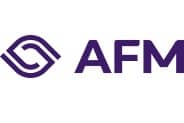
AFM: No technical barriers for the implementation of a consolidated tape for fixed income
The Dutch Authority for the Financial Markets (AFM) sees no technical barriers for the implementation of a consolidated tape (CT) for fixed income. In anticipation of the review of the Markets in Financial Instruments Regulation (MiFIR) by the European Commission (EC), expected on 23 November, the AFM has provided market participants access to the AFM’s Innovation Hub to stimulate the development of a CT. Based on initial findings, no technical barriers or adverse development costs have been identified. The AFM encourages further participation of data infrastructure providers and trading venues in the Innovation Hub.
In brief
- Initial findings show no technical barriers or adverse development costs for a fixed income CT.
- Market participants have access to AFM’s Innovation Hub to stimulate CT development.
- AFM encourages further participation of data infrastructure providers and trading venues in Innovation Hub.
- The AFM has identified four overarching CT use cases that underline how a CT can provide wide-ranging benefits to a wide variety of markets participants.
- The CT use cases clearly demonstrate a CT is an essential element of the Capital Markets Union (CMU).
Since the Summer, market participants have been invited to the AFM Innovation Hub to develop CT proof of concepts (PoC). These PoCs enable the AFM and other policy makers to gain insight and experience regarding the most effective solutions and use cases for a CT within Europe's CMU. The initial findings of the project are positive and are expected to contribute to the eventual implementation of a CT that works for all market participants.
Existing cloud-based technology and protocols
At present, the project consists of five fintech participants focussing mostly on fixed income instruments. Despite having distinctive business models, the participants share the common feature that they are existing or starting providers of advanced financial market data analytics.
Using cloud-based infrastructure and solutions, these fintechs can act as consolidated tape providers or digest financial market data for a technology-led CT using advanced programming and analytics capabilities. In most cases, these providers can offer CT data at low costs by leveraging their existing data management analytics capabilities and business models, with additional underlying business cases for value added data services. No technical barriers or adverse development costs have yet been identified which would otherwise prevent the provision of data containing the necessary CT information from trading venues and Approved Publication Arrangements (APAs) towards consolidators.
AFM supports CT development, encourages further participation
Transparency is key in ensuring that markets are fair, sound and efficient. The AFM therefore strongly advocates the implementation of a consolidated tape for equity and bonds. A consolidated tape will result in less fragmented price information, as well as other relevant information, in the European markets. It will also help in creating a real European Capital Markets Union, improve the level playing field and will improve opportunities for monitoring execution quality (best execution) for market participants and investors.
The AFM continues to encourage further participation of data infrastructure providers and trading venues in the Innovation Hub (email: cm_internationaldesk@afm.nl). As a next step, the AFM would welcome further work on CT prototypes and industry engagement on data standards and governance. Initiatives for other asset classes are particularly encouraged to apply.
Preconditions for a fixed income CT
The AFM has identified several preconditions for a fixed income CT to succeed. First, a Level 1 mandate under the revised MiFIR is needed for trading venues and APAs to contribute the required data fields, tools for managing and supervising the contributions and supporting commercial models.
Second, there is a need to define common data standards, to set required data fields, and to agree on data access and governance models to ensure the efficient working of the CT model. Third, significant regulatory changes are needed to simplify the current fixed income post-trade deferral regime which hampers the availability of sufficient transaction data.
Overarching use cases for all asset classes
In addition, as part of its ongoing policy work and discussions with market participants, the AFM has identified four overarching use cases that underline how a CT can provide wide-ranging benefits to a wide variety of markets participants. These use cases clearly demonstrate a CT is an essential element of the Capital Markets Union. The four use cases are:
1 Level the playing field and foster the CMU
A CT democratises access to prices and trade information for issuers and investors by reducing dependency on multiple costly and fragmented data sources:
- Retail and professional investors alike gain insights in data that is currently only available to venues or the most sophisticated users such as large asset managers, brokers, liquidity providers and proprietary traders;
- Reduction of data monopolies and lowering costs by making basic price and trade information widely available;
- Integration of a highly fragmented venue and liquidity landscape;
- Enabling further growth through better displayed markets; and
- Improving investment and funding opportunities for EU companies through increased visibility, transparency and comparability.
2 Enabling EU-wide reference pricing
Availability of accurate reference price information assists greatly with making the right trading and investment decisions. This particularly holds for:
- Issuance of new instruments;
- Trading decisions;
- Investment and portfolio management;
- Asset allocation;
- Collateral pricing; and
- Asset and portfolio valuations.
3 Improving the quality and resilience of public markets
Availability of accurate reference price information leads to increased market transparency, helps to enhance resilience, and provides insights at points of execution for:
- Pre- and post-trade analysis of transactions;
- Assessment of execution quality (best execution); and
- Ensuring continuance of EU-wide trading in cases of technical outages on primary markets; and
- Back-testing of algorithms.
4 Increasing the means for performance and risk management
Availability of price and trade information provides an independent means for improving risk and performance management on EU-wide trading activity, liquidity and pricing for:
- Performance management of assets and portfolios;
- Credit and market risk management;
- Funding and collateral management;
- Cross-market surveillance; Research; and
- Audit and analytics.
Journalists may contact Maarten Dijksma, AFM spokesperson, on +31 (0)6 11 34 02 81 or at maarten.dijksma@afm.nl.
Contact for this article

Would you like to receive the latest news from AFM?
Subscribe to our newsletter, we will keep you up-to-date.